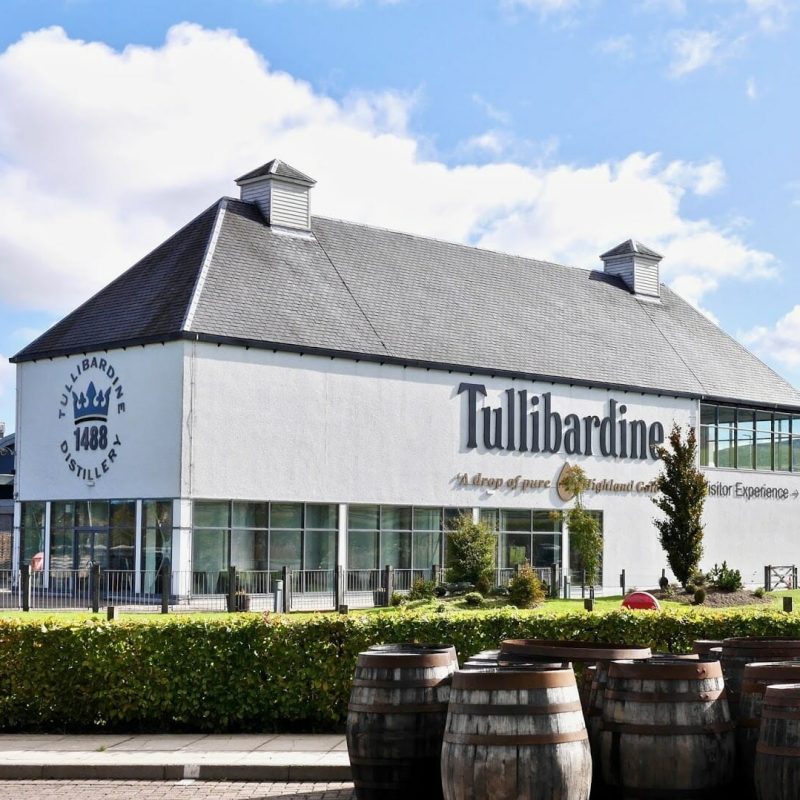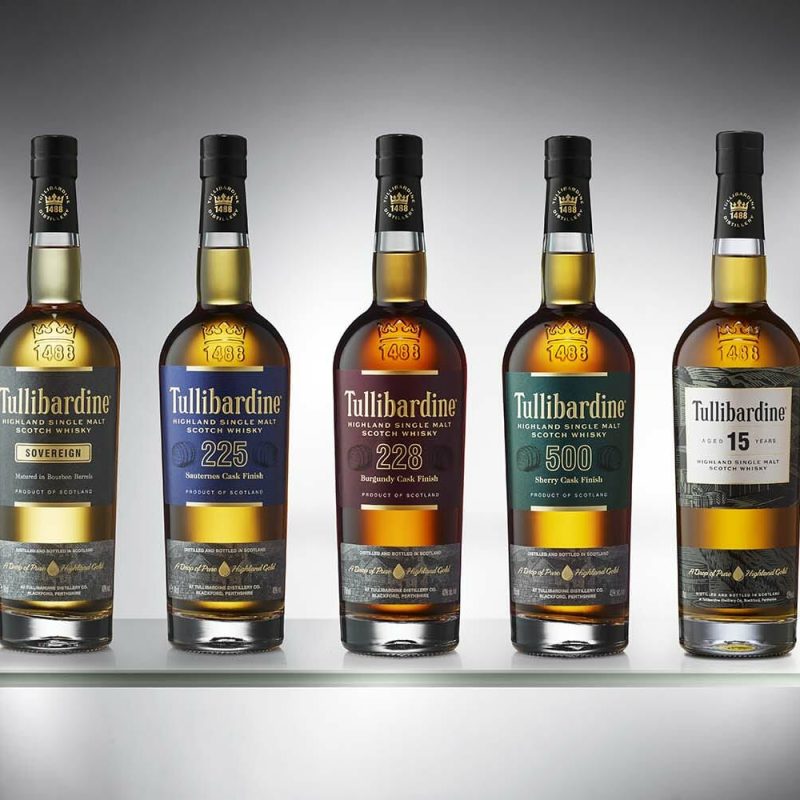About the distillery
The Tullibardine whisky distillery is located in the Scottish Highlands in Blackford, Perth and Kinross, close to the Ochil Hills and the Danny Burn, their main water sources. Tullibardine has a history of brewing and distilling that dates backs to the 15th century, making it one of Scotland’s oldest distilleries.
The Tullibardine whisky distillery is located in the Scottish Highlands in Blackford, Perth and Kinross, close to the Ochil Hills and the Danny Burn, their main water sources.
Tullibardine has a history of brewing and distilling that dates backs to the 15th century, making it one of Scotland’s oldest distilleries.
Tullibardine was put on the map when a young KingJames, IV Scotland stopped by Scotland’s first public brewery to purchase beer right before hisCoronation. Due to great local water source at the time this brewery was known for producing fine beer.The King had granted them a Royal Charter.
In 1947 William Delme-Evans tested the pure waters of the nearby springs and consequently knew he had found the perfect location for distilling whisky. He then began the process of converting the original brewery into what is known now as the Tullibardine distillery.
The brewery went on to being sold to Brodie HepburnLtd in 1953.
Invergordon then acquired the distillery in 1971 and carried out a rebuild in 1974 with another pair of stills added to the original pair.
The distillery was then passed on to Whtye & Mackayin 1993, only two years later to be mothballed.
In June 2003, the distillery was purchased by a business consortium with a vision to create a retail complex and tourist attraction with the distillery asits core.
In the December of 2003, Tullibardine distillery once again fired up its boilers and the spirit flowed from the stills for the first time in nearly nine years.
Throughout the re-commissioning process, care was taken to maintain as many of the traditional methods of production as possible and utilise the skills of the distillery manager and operators in producing the Tullibardine spirit.
Tullibardine is one of the fastest growing whisky brands right now. It has gained a large market presence through distribution deals with the likes of Sainsbury’s, Waitrsose, Tesco’s etc to give it significant brand exposure and now sits proudly on the shelf’s alongside the likes of Macallan, HighlandPark, Glenmorangie, Ardberg to name but a few.
It’s international exposure and presence continues to grow also with distribution deals in place withAmerican, China, Japan and Australian markets to name a few large countries who thinks it’s worth importing.
A 14 year old sherry butt cask recently sold in 2019 at auction for £10,600
Tulliberdine’s style is typically fairly sweet and floral, arguably more reminiscent of a gentle Speyside rather than a big bold and spicy highlander. Tulliberdine produce approximately three million litres per year with a 55 hour fermentation time. The great news for investors is that it is remarkably good value still, and definitely worth adding to the portfolio.
A bottle of 1964 Tullibardine retails at £1995. A 23 year old 1993 bottle at £699.95.
Based on the above, If you were to hold your cask for 10 years or
even 5 years, rather than the 3, the return will be considerably more. Tullibardine currently sell 10 year Custodians Collection at £125 a bottle.


